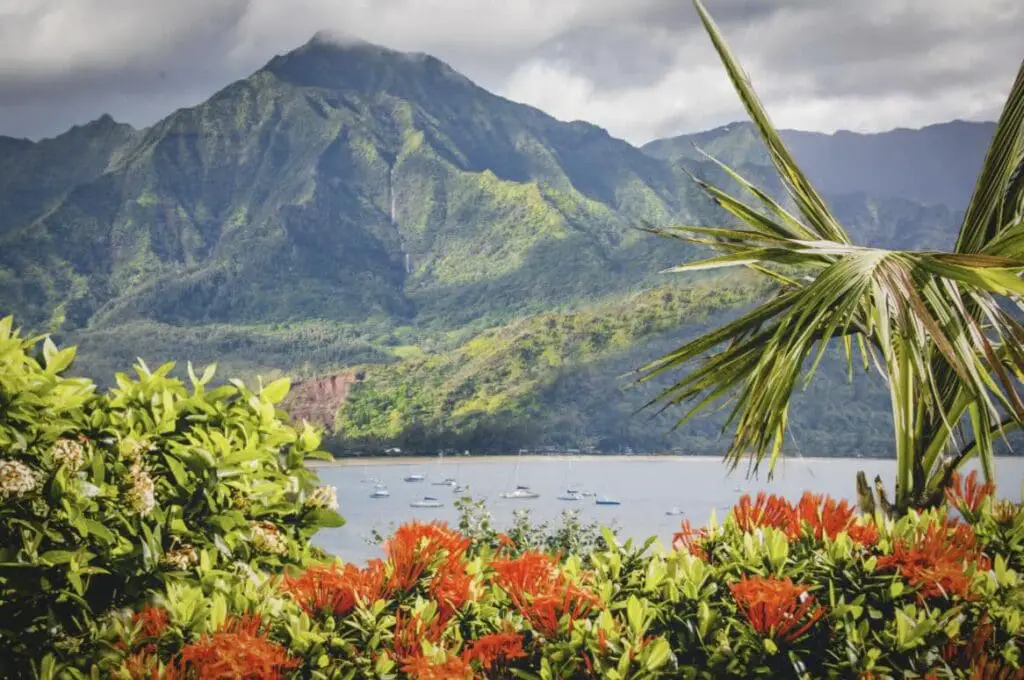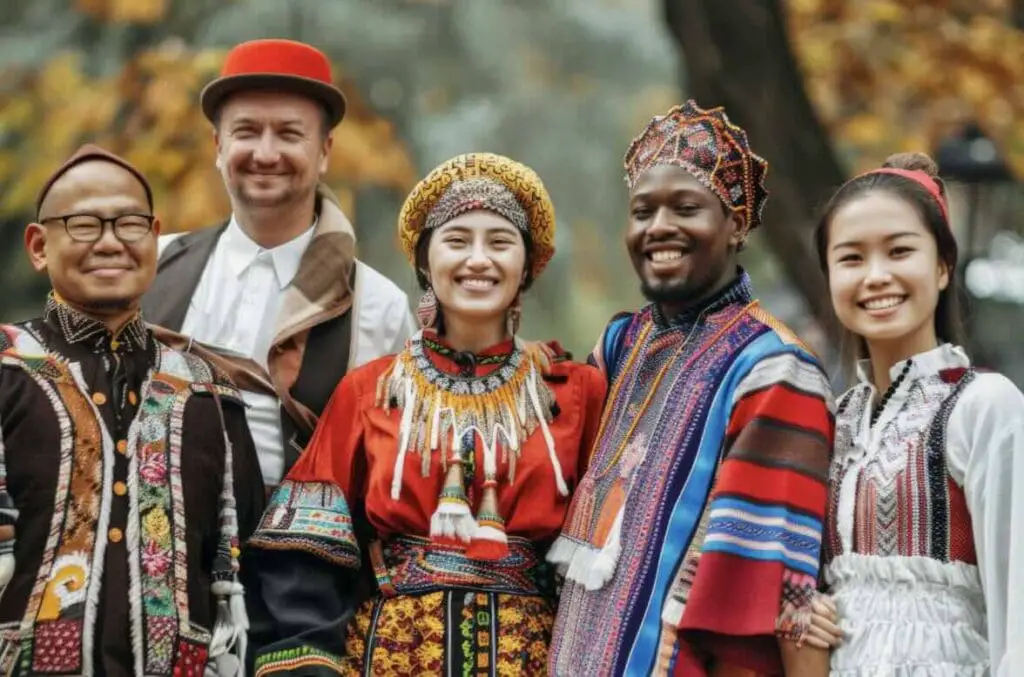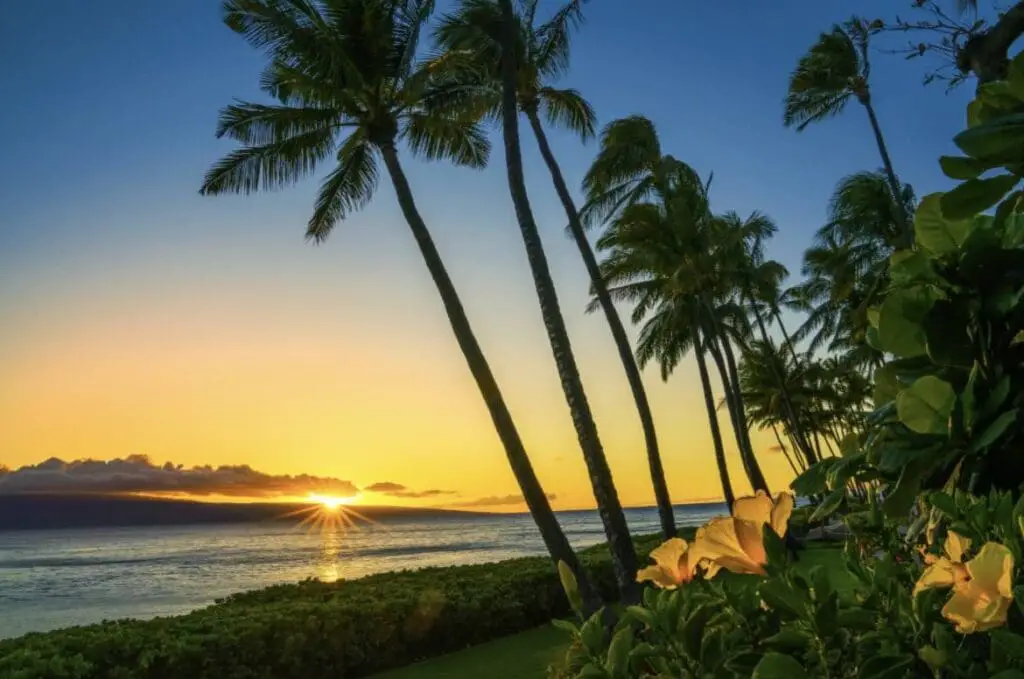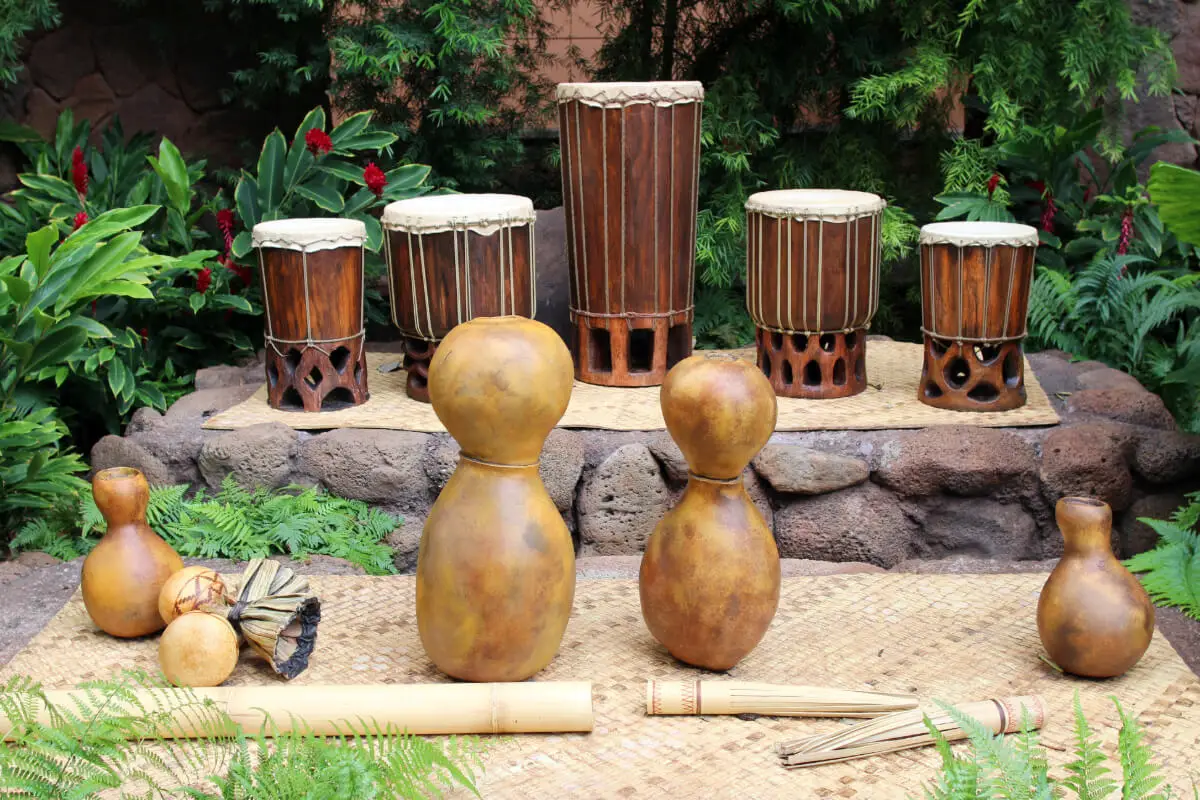The Hawaiian Islands, a lush archipelago amid the Pacific Ocean, have long captivated the imagination with their beauty and history steeped in the rich tapestry of early Polynesian culture. Here, the early Hawaiians, a people of remarkable navigational prowess and deeply ingrained societal structures, first set foot, birthing a civilization that thrived in isolation.
From their South Pacific origins, these Polynesian navigators conquered the waves, using sophisticated techniques and the stars above as their guides, to reach and settle these volcanic islands. This essay endeavors to unravel the tapestry of early Hawaiian life, exploring their journey across the expansive ocean and the distinctive social, cultural, and economic frameworks they erected upon their newfound shores.
Table of Contents
- Origins and Settlement of Early Hawaiians
- Social Structure and Cultural Practices
- Economic Sustenance and Land Management
- Navigational Expertise and Voyaging
- Navigational Mastery of the Early Hawaiians: Unveiling the Secrets of Pacific Travel
- Navigational Stars and Ocean Swells
- Bird Navigation and Environmental Indicators
- Integrating Meteorology and Seasonal Winds
- Oral Traditions and Memory Frameworks
- Collaborative Education and Mentorship
- Cross-Pollination of Polynesian Techniques
- Related Questions
Origins and Settlement of Early Hawaiians
In the vast expanse of the Pacific Ocean lies the Hawaiian archipelago, a collection of islands remarkable not only for their natural beauty and fascinating human history. At the intersection of courage and ingenuity, the early Hawaiians embarked on an epic journey of exploration and settlement, marking one of the most incredible feats of prehistoric seafaring and navigation.
The Voyage to Paradise
The Polynesians, a seafaring people whose origins trace back to Southeast Asia, are credited with the discovery and settlement of Hawaii. Their journey began over a thousand years ago, propelled by sophisticated maritime skills and celestial knowledge inherited from their ancestors.
Utilizing double-hulled canoes crafted from the abundant resources of their homeland, these intrepid navigators set forth into the vast blue wilderness, guided by the wind, stars, and wildlife patterns. Their embarkation was not a haphazard foray but a calculated voyage underpinned by a deep understanding of the ocean’s rhythms and the innate human drive to explore and inhabit new frontiers.
The ancient Polynesian navigators possessed an intimate grasp of wave directions, sea currents, and an ancient form of celestial navigation known as ‘wayfinding.’ This non-instrumental technique involved reading signs from nature, such as the position of the stars, the ocean’s color, and the birds’ flight patterns, to determine their course across the open waters.
Cultural Adaptation and Survival
Upon reaching the Hawaiian shores, these settlers encountered isolated islands with diverse landscapes and climates. Each island presented its unique resources and challenges, requiring adaptability and innovation from the new inhabitants.
The early Hawaiians quickly learned to harness the natural abundance surrounding them. They adopted an ahupua’a system, a sustainable land division method that stretched from the mountainous highlands to the fertile coastlines, ensuring that communities had access to all necessary resources—fresh water, arable land, and fishing grounds.
Agriculture played a pivotal role in the sustenance of these communities. Early Hawaiians cultivated crops such as taro, sweet potato, and breadfruit, which became staples of their diet. Moreover, they developed fishponds, a remarkable aquaculture achievement that allowed them to raise and harvest fish efficiently, providing a rich source of protein.
The growth of society was reflected in the development of complex social structures, religious practices, and art forms, heralding the rise of a distinct Hawaiian culture. This cultural evolution was shaped by integrating values and knowledge from their Polynesian roots, tailored to their new island environment.
Navigators of Legacy
The early Hawaiians’ voyage to the archipelago is a testament to human courage and adaptability. Their successful colonization of Hawaii from across the ocean’s expanse is a narrative of interconnected disciplines, including anthropology, archaeology, and historical linguistics.
Recent research, informed by evidence from these fields, provides a more precise timeline of this remarkable migration. Radiocarbon dating reveals that the original Polynesian settlers likely arrived in Hawaii around the 12th century, with a consensus among scholars placing the date between 1000 and 1200 A.D.
In the present day, the legacy of these navigators continues to spark admiration and inspiration. Their descendants, scholars, and enthusiasts are actively reviving the traditional art of Polynesian navigation. The renaissance of voyaging knowledge celebrates not just the technical prowess of these early seafarers but also honors their profound spiritual connection with their environment.
Thus, the settlement of the Hawaiian archipelago is a vibrant narrative that captures the essence of human exploration. From tracking the paths of the migrating Pacific Golden Plover to mastering the art of celestial navigation, the early Hawaiians epitomized the pioneering spirit.
In the echoes of the past, we find resonance in the present and inspiration for the future. As the Hawaiian proverb states, “He wa‘a he moku, he moku he wa‘a,” translating to “A canoe is an island, an island is a canoe.” In this, there is the wisdom that the successful habitation of an island requires the same skill and careful stewardship as conducting a voyage. Now, as in the millennium past, the history of Hawaii and its people continue to inform and enrich the broader tapestry of human achievement.

Social Structure and Cultural Practices
Social Hierarchies and Cultural Traditions in Early Hawaiian Society
Delving into the depths of early Hawaiian society, one is struck by the intricate social fabric woven from customs and hierarchies, as essential to daily life as the land and sea were to their survival. The intricacies of their cultural mores and structures of authority reveal a civilization both sophisticated and deeply connected to its surroundings.
At the zenith of this hierarchical framework were the ali’i, the ruling chiefs. To them, virtuous governance was like water flowing from a high mountain spring—life-giving, guiding, and essential. The ali’i held political power and a near-divine status; their genealogies were often traced to the gods. Their authority was absolute, and their decisions shaped the islands’ fate, from intertribal relations to resource management.
Below the ali’i, the kahuna—priests or skilled experts—exercised significant influence. As conduits between the spiritual and natural worlds, they oversaw religious ceremonies and were custodians of wisdom, from healing arts to agricultural expertise. Their knowledge of kapu, the sacred laws, was unparalleled, a testament to their role as society’s moral compass.
The maka’āinana, commoners, formed the backbone of the islands, tending to the land and sea with a diligence born from generations of practical wisdom. Their hands carved canoes from koa wood, and their sweat nourished the taro fields. The delicate balance that permitted prosperity, from the careful stewardship of fishponds to the harvest of sweet potatoes, hinged on their labor and understanding of the ‘aina, the land that sustained them.
Occupying a distinct tier were the kauwā, those outcasts or defeated, relegated to a life of servitude. Yet, even within this seemingly stark division, their roles were essential, interwoven into society’s fabric as threads binding a quilt.
The kapu system, an intricate set of taboos and laws, dictated their lives as fine as the etchings on a bamboo stick map. This sacred code governed everything from one’s daily diet to the sanctity of a chief’s shadow, which none could cross without consequence. It was the ever-present guidebook, ensuring harmony between humans, the gods, and nature.
Ceremonies and rituals underscored daily life, the movements as rhythmical and poised as the ocean waves. Hula, a revered art form, was more than mere dance; it was history embodied, mythologies made manifest, and prayer in motion. With each graceful gesture, dancers are entrenched in the communal memory of the epics of deities and the sagas of ancestors.
Family ties, or ‘ohana, were paramount, transcending the present to forge alliances that echoed through time. Marriages among the ali’i were strategic, often consolidating power or ending strife, a reminder that unity could be as strong a force as any weapon.
Not to be overlooked were the gender roles and expectations, which were nuanced and indicative of an understanding of balance. Men typically assumed the roles of fishermen and warriors, embodying the mana, the spiritual power present in all things, which they needed to harness the sea’s abundance and defend their people. Women, revered as the creators of life, were often the cultivators of the earth, entrusted with the growth and sustainability of the land’s bounty.
Feasting and sport, too, offered glimpses into the collective spirit—the luau, a communal meal, celebrated abundance as much as it reaffirmed social roles and hierarchies. At the same time, games like holla sledding and surfing illustrated a love for hearty competition and a deep reciprocal respect for nature’s gifts.
This reflection on early Hawaiian social structure uncovers a prism through which we can view a society thriving within its means, elements of life interdependent like the interlocking stones of a heiau, a temple platform. Understanding these social hierarchies and cultural traditions is seen not merely as an exercise in historical curiosity but as a respectful acknowledgment of a people whose lives were a living, breathing tapestry of interconnectivity and purpose, an eternal dance with the land and sea from which they had sprung.

Economic Sustenance and Land Management
Resource Management and Economic Pursuits in Early Hawaiian Society
Delving into early Hawaiians’ resource management and economic activities unearths a saga of resourcefulness and environmental stewardship that holds as much intrigue as any scientific endeavor. To understand the economic foundations of early Hawaiian civilization, one must first appreciate the sophisticated interplay between their natural surroundings and societal structures.
In a milieu set against the backdrop of verdant valleys, rugged mountains, and the vast expanse of the Pacific, early Hawaiians forged a living but sustainable paradigm that intricately linked their economy with ecology. Resource management was not a mere segment of their economy but the crux of their survival and prosperity.
Central to their resource management was the innovative ahupua’a system, a model of land division stretching from the mountainous interiors to the fertile coasts. This system was not simply a means of apportioning land; it represented a holistic understanding of watershed management, ensuring that every tier of the community could thrive.
Each ahupua’a was self-sufficient, producing many goods that sustained its inhabitants. The fertile uplands yielded kalo (taro), the staple of the Hawaiian diet, along with other vital crops like ‘uala (sweet potato) and ‘ulu (breadfruit). These were ingeniously cultivated through terraced fields and irrigation systems that testify to the early Hawaiians’ agricultural acumen.
The economic ingenuity of these ancient islanders extended into aquaculture, where fishponds, known as loko i’a, were engineered to harness the brackish waters favorable to certain fish species. These aquatic farms provided sustenance and a veritable economic boon, integrating seamlessly into the natural landscape.
Trade and barter were pivotal economic activities, binding communities across different ahupua’a. Surplus from agriculture and aquaculture, along with other artisanal products like tapa cloth, tools, and salt, were frequently exchanged, facilitating economic, cultural, and social intercourse.
Craftsmanship in wood and stone carving, alongside the creation of feathered capes and ornaments, added to the economic tapestry. The artistry and labor invested in these endeavors speak to the community’s aesthetic values and the artisans’ skills, which undoubtedly fueled the trade networks within and between islands.
Maritime prowess also played a significant role in the early Hawaiian economy. Canoe building and deep-sea fishing were essential activities, backed by an intimate knowledge of ocean currents, marine life, and weather patterns. These skills were not merely economic assets but emblems of a people’s adaptability and maritime heritage.
Furthermore, labor division based on gender and social status further optimized resource management. Men ventured into deep-sea fishing and heavy agriculture, while women excelled in foraging, cultivating the family garden plots, and refining the crafts critical to daily Hawaiian life.
This synthesis of environmental awareness, social coordination, and economic diversification defined the vibrancy of the early Hawaiian economy. The ancients of Hawaii did not simply exploit their environment; they engaged with it, cultivated it, and, in many ways, sanctified it.
In a world where sustainability is increasingly sought after, the strategies employed by early Hawaiians offer a timeless blueprint for resource management—an economic symphony played to the rhythms of the natural world, ensuring not just the survival but the flourishing of their culture and the vivid expanse they called home.
Whether through the cascading taro terraces, the teeming fishponds, or the carefully navigated sea routes, the story of early Hawaiians stands as a testimony to human ingenuity and respect for nature—a narrative as pertinent today as it was in the era of the great Polynesian navigators.

Navigational Expertise and Voyaging
Navigational Mastery of the Early Hawaiians: Unveiling the Secrets of Pacific Travel
Few civilizations can rival the early Hawaiians’ navigational prowess in seafaring. Their extraordinary maritime abilities facilitated the exploration and settlement of the vast Pacific. Among the kaleidoscope of global navigation methods, the techniques employed by Hawaiians to traverse oceanic expanses speak volumes about their courageous spirit and deep environmental understanding.
Navigational Stars and Ocean Swells
Central to Hawaiian navigation was the detailed knowledge of celestial bodies. Navigators, known as way finders, meticulously observe the stars, noting their rising and setting points on the horizon. This stellar guidance system was complemented by understanding the oscillation patterns of ocean swells—another masterpiece of natural indication. By decoding the rhythmic dance of waves, wayfinders deduced directional cues from the subtle interplay of wind and water.
Bird Navigation and Environmental Indicators
Birds were key players in this navigation saga. Their species-specific migratory patterns and flight trajectories served as living compasses, guiding seafarers to proximate land masses. Recognizing these aeronautic guides required a profound respect for the natural world, fostering a symbiotic relationship between Hawaiians and their avian counterparts.
Integrating Meteorology and Seasonal Winds
Hawaiian navigators were not just accomplished stargazers and oceanographers but also adept meteorologists. Their acute awareness of weather patterns and seasonal winds was critical for successfully timing voyages. Distinct wind patterns were known to indicate the presence of islands, thus aiding in course-plotting across the cobalt depths of the Pacific.
Oral Traditions and Memory Frameworks
Without written logs or maps, the colossal knowledge of early Hawaiian navigators was preserved and disseminated through oral tradition. Chants and song-like recitations served as mnemonic devices, encapsulating navigational routes, weather phenomena, and essential waypoints. These oral maps are unlocked for future generations, and the navigational intellect is engraved in the collective memory of Hawaiian society.
Collaborative Education and Mentorship
Education in navigation was an immersive, mentor-based endeavor. Experienced wayfinders would shepherd novices through an exhaustive learning process. This pedagogical system hinged on collaborative effort and shared wisdom, establishing an enduring legacy of navigational supremacy within the community.
Cross-Pollination of Polynesian Techniques
The Hawaiians were not insular in their navigational accomplishments; they were part of an extensive Polynesian network. Ideas and techniques were exchanged as islanders encountered one another, enriching the navigational corpus and reinforcing the transoceanic web of wisdom across Pacific societies.

The legacy of early Hawaiians endures not only in the physical remnants of heiau and ancient fishponds but also in the living culture and practices that have traversed generations.
The echoes of their chants, the perpetuation of their farming and fishing traditions, and the ingrained values of ‘ohana speak of a people intimately connected to their environment and each other. Through the lens of their unique experience, we gain a profound understanding of human ingenuity and resilience. The heart of Hawaii’s story, rooted in the audacious spirits of the first Polynesian voyagers, continues to pulse vigorously in the islands’ lifeblood, shaping Hawaii’s identity and spirit in the fabric of the Pacific and the world at large.
At A Bus On A Dusty Road, we talk about travel, life, and ex-pat living. We are all about “Living Life As A Global Citizen.” We explore social, cultural, and economic issues and travel.
We would love to have you be part of our community. Sign up for our newsletter to keep up-to-date by clicking here. If you have any questions, you can contact me, Anita, by clicking here.
Listen to our Podcast called Dusty Roads. You can find it on all major podcast platforms. Try out listening to one of our podcasts by clicking here.
Subscribe to our A Bus On A Dusty Road YouTube Channel with great videos and information by clicking here.
Related Questions
How Do You Say “Hello” In Hawaiian And How It Is Traditionally Used?
In Hawaii, people will greet you by saying hello or aloha. They may also use the word aloha to say goodbye. Aloha is the traditional greeting in the Hawaiian language for greedy people that are friends, family, or even strangers. But the word aloha means much more than just hello or goodbye; there are many traditional and cultural meanings inside the word.
By clicking here, you can discover How Do You Say “Hello” In Hawaiian And How It Is Traditionally Used?
What Continent Is Hawaii A Part Of And Why?
Politically, Hawaii is considered part of the North American continent as it is one of the United States of America states. But location-wise, many people consider it part of the Oceana continent as it is located within the area known as Polynesia.
By clicking here, you can discover What Continent Is Hawaii A Part Of And Why?
Are Hawaiians And Samoans The Same Thing?
Hawaiians and Samoans are not the same groups of people; they are very different. Native Hawaiians are considered to be Americans. Most native Hawaiians do not speak the Hawaiian language. On the other hand, Samoans consider themselves from the archipelago of Samoa. Most Samoans speak Samoan and English. Culturally the two places are very different.
By clicking here, you can discover Are Hawaiians And Samoans The Same Thing?

